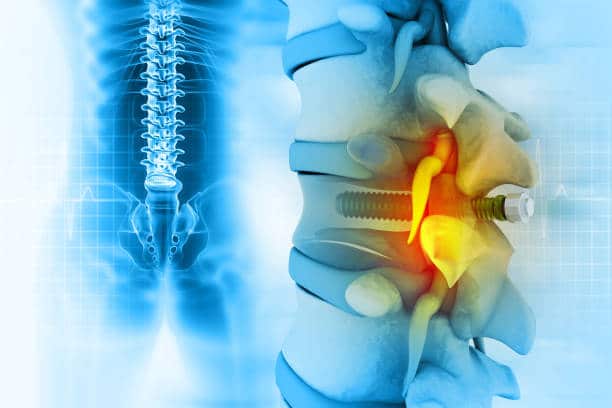
Living with spinal stenosis can be painful and limiting; it is a condition that causes narrowing of the spaces within the spine and often results in pain, numbness, or weakness. This treatment procedure is often recommended when symptoms, such as back pain, leg weakness, and numbness, affect your daily life. Here, we will provide you with everything you need about spinal stenosis surgery: treatment cost & recovery time. Dr. Evan Trapana is a renowned spine surgeon specializing in spinal stenosis surgery and providing personalized postoperative medical care.
Spinal stenosis is when the spinal canal narrows and compresses the spinal cord and nearby nerves. Spinal stenosis is usually a degenerative process related to aging; however, it can also be caused by herniated discs, vertebral injury, and congenital factors. Spinal stenosis mostly affects the cervical (neck) and lumbar (lower back) regions of the spine.
Spinal stenosis can result in serious nerve damage affecting bladder control and overall mobility if left untreated.
Spinal stenosis surgery is typically recommended when:
This treatment procedure is used to relieve nerve pressure, restore normal function, and improve the patient’s quality of life.
There are numerous surgical options used for managing spinal stenosis, as it presents in a variety of ways. Dr. Evan Trapana’s approach is tailored to the diagnosis and what is best for each patient.
You should expect several things before spinal stenosis surgery, which include:
The spinal stenosis treatment procedure typically involves:
Duration: 1 to 3 hours, depending on the complexity
After spinal stenosis surgery, most of the patients stay in the hospital for around 1 to 3 days.
An expert spinal surgeon, like Dr. Trapana, provides personalized treatment plans and exceptional postoperative medical care to each patient, ensuring optimal results, long-term benefits, and better recovery.
The average cost of spinal stenosis surgery may vary depending on several factors, such as the type of procedure, the complexity of the case, hospital facilities, and geographic location. In the US, the cost of laminectomy or decompression ranges from around $20,000 to $50,000, and spinal fusion ranges from around $60,000 to $150,000. Here are some factors that may influence the cost of the treatment procedure:
Although spinal stenosis surgery is generally safe, like all surgeries, it also carries certain risks of complications, such as:
Choosing a skilled and experienced spine surgeon like Dr. Evan Trapana can significantly reduce these risks. For optimal results, patients are closely monitored throughout the entire procedure & recovery process.
Several after-surgery lifestyle changes can improve results and prevent future spine issues:
With extensive experience and expertise, Dr. Evan Trapana specializes in providing high-quality medical support and customized treatment plans for spinal conditions, including Spinal Stenosis. Here are some of the major reasons for choosing Dr. Evan Trapana for spinal stenosis surgery, including:
If you want to learn more details about spinal stenosis surgery, schedule a consultation with Dr. Evan Trapana by contacting his team through the given details:
Phone No: 305-243-3286, 305-243-3286
Office Hours: Mon to Fri: 8:00 am to 6:00 pm (EST)
Address: UHealth Tower, 1400 NW 12th Ave., Suite 2, Miami, FL 33136
Answer. The spinal surgeries for spinal stenosis include laminectomy, foraminotomy, spinal fusion, and minimally invasive or robotic-assisted spine surgery.
Answer. The recovery time after spinal stenosis surgery varies depending on the procedure; minimally invasive surgery may require 4 to 6 weeks, whereas spinal fusion may take 3 to 6 months for complete recovery.
Answer. Compared to traditional open surgery, minimally invasive surgery involves smaller incisions, less pain, reduced blood loss, and faster recovery.
Answer. These lifestyle changes include maintaining a healthy weight, staying active, using ergonomic furniture, avoiding heavy lifting, and following a physical therapy program tailored to your recovery.